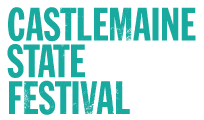What is it that informs your work and how is it expressed in your art?
The world is in a constant state of flux. Sometimes to take stock and figure out who we are we turn to the past, to our memories. The objects that I make explore the relationship between memory and identity, our stories and our connections to each other and the world around us.
I see memory as a precious but fragile object… You know it’s that thing we want to keep on the mantle piece to remind us of something, but we know that one day we’re just going to knock it over and be left with fragments that don’t quite fit together the same way.
Memories inevitably shift with every recollection in the present. Identity can also be just as fickle and changeable. In my art practice, objects become anchors for memory and identity, giving both tangible, albeit temporary expression.
 What attracts you to your subject matter?
What attracts you to your subject matter?
Everyone has their own stories to tell, and others’ stories and memories trigger our own recollections and narratives. We connect through our memories and stories.
Once an object I have made is viewed, used, passed on or worn by someone else it takes on changed meaning and becomes part of someone else’s story. That tension between fixity and transience and the promise of connecting with others through memory and story fascinates me.
Did you choose your art subject or did it choose you?
Ironically… I can’t remember, if the broader subject of memory and identity chose me or if I chose it. But I will say that I believe that ideas and inspiration for art work and creative projects come looking for you. Sometimes they spring out of nowhere, slap you across the face to get your attention. Before you know it, you are making work about a subject even though you didn’t quite plan to go there. The subject matter for my new work, Flowers for Oberon, kind of slapped me in the face like that one day. I started playing with memories and stories about themes, then experimenting with forms and expressions of those ideas. The work evolved and developed from there.
How do you make your work?
Sometimes I begin with words: a poem or piece of prose I’ve written; something I’ve read; fragments of meaning; fragments of conversations; song titles and lyrics; idioms and sayings; things I remember. Other times I begin with collected objects that I’ve hoarded or objects and stories that other people send me.
I play and experiment with different ways to express the memory, the story, and out of that will come forms and objects, and (hopefully) a coherent narrative or at the very least the beginning of a good story.
My processes include: sculpting, metalwork, sewing, felting, crocheting, weaving, drawing, photography and sometimes even performance.
What is the integral work of an artist?
There has been much undermining and devaluing of the work of artists in Australia recently by our government and their decisions to cut funding to support the arts; proposals to change copyright laws; and proposals to stop funding support for students who make so called “lifestyle choices’, by enrolling in creative arts courses.
Artists’ work is not just a lifestyle choice. Artists’ work matters. Yes, artists’ work is good for the soul and all that…. but artists work and the Arts is a strategic national resource, integral to our cultural, economic and social capital.
How would you like people to view and interact with your art?
I hope that people will engage with the stories and themes explored: memories of love and death; beauty and betrayal; foolishness and folly. I hope this will trigger their own memories and that some of them leave with a little something, that becomes an anchor for their own identity and stories.
Visit Lenni’s website for more about her work.


![Ben-laycock-castlemaine-artist-337x265[1]](/2017/wp-content/uploads/2017/03/Ben-laycock-castlemaine-artist-337x2651-50x50.jpg)
![raven01[1]](/2017/wp-content/uploads/2017/03/raven011-50x50.jpg)
![pjpa_m109214[1]](/2017/wp-content/uploads/2017/03/pjpa_m1092141-50x50.jpg)





